There have been several "mass extinctions" throughout history which almost wiped out life on earth.
Scientists fear humanity could be destroyed during one of these devastating events - and one conspiracy theorist even believes this could happen on SATURDAY.
Now, there's no reason to be afraid of a wild piece of online gossip which suggests a mysterious planet called Nibiru will whack into us this weekend.
Comment: See: Batten down the hatches: More nonsensical Nibiru-Planet X-Death Planet "news" coming our way!
But there are plenty of more realistic threats to the future of our species.
If we manage to avoid destroying ourselves in a nuclear war or committing collective hari-kari by unleashing deadly manmade viruses, there are several ways our species could face its doom.
Our planet has already seen some of its most successful species wiped out following spectacular disasters like the asteroid crash that killed the dinosaurs.
The worst of these mass extinctions is called The Great Dying and resulted in the destruction of 96 percent of life on Earth.
Could the same happen to us? Read on to hear about the greatest threats to our species.
1. Deadly asteroid impact
A massive meteorite wiped out the dinos - and we could face exactly the same fate.
Hundreds of asteroids pass perilously close to us every year, but most speed past without hitting Earth.
But if one was to be thrown out of kilter on its travels, its path may be altered and it could be forced straight into the surface of our planet.
There have been many close shaves in the past and even some small-scale asteroid disasters in living memory.
A meteor that exploded in the atmosphere over Siberia in 2013 injured some 1,600 people.
If it had been just a little bit bigger, the whole city would have been wiped out.
Just imagine what would happen if a truly gigantic asteroid hit us.
Comment: Indeed. And the reason why SOTT has paid so much attention over the years to this particular possibility.
2. Nuclear war
Some fear that a nuclear war is more likely to happen now than at any other point of history since the end of the Cold War.
Atomic tensions are running extremely high since North Korean dictator Kim Jong-un claimed he has the ability to hit New York with nuclear weapons.
The tubby tyrant has spent years publishing pugnacious propaganda which shows bombs dropping on the Statue of Liberty.
President Donald Trump is now locked in a war of words with North Korea after it flexed its muscles in an unprovoked missile test that saw it fire a missile directly over Japan.
If Trump follows up on the warning that he would retaliate with "fire and fury" if North Korea threatens US territories, we could be in a pretty hairy situation.
Modern nuclear weapons are terrifyingly powerful.
The largest bomb ever designed, the Russian Tsar Bomba, would wipe out everyone within 2 miles of the area and then leave a contaminated wasteland spreading five miles either way from the impact zone.
About 90 percent of the people in this disaster zone would die, with many suffering lingering deaths from radiation or extreme burns from the blast.
If there is a nuclear war, there is little chance humanity would survive.
Comment: Knowing Trump - but also knowing that Trump has more or less given in to Deep State tactics and agendas - it seems more likely that all the back and forth bluster involving North Korea is just that; bluster. But who knows how stable any conflict the US war party involves itself with will become - since it has become so increasingly desperate and reckless in its attempt to dominate and subjugate. And much of the world has had enough.
3. Methane bursts from the seabed
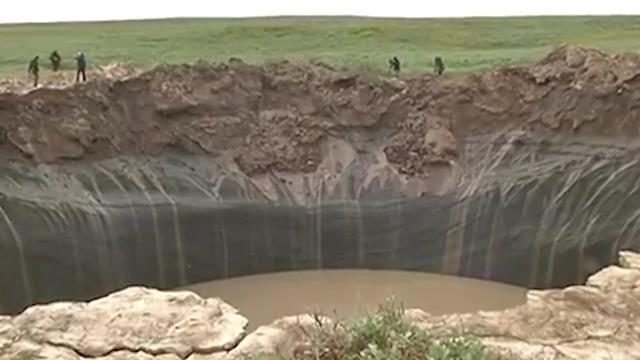
Methane gas expulsion is one of the theories put forward by scientists to explain the Great Dying, which took the Earth ten million years to recover from.
It's believed the slow production of methane over millions of years produced greenhouse effect that gradual turned the planet into a desert.
If it were to happen again, it could raise temperatures from today's average of 16°C to above 30°C.
This would melt the icecaps, flood all our major cities and change the world so dramatically that it would be impossible for humanity to survive.
Worryingly, some scientists believe the melting of permafrost in Siberia is already causing methane to bubble out of the ground.
If this process accelerates, we could be in big trouble.
Comment: See also: Permian Mass Extinction: Methane gas oceanic explosion wiped out 95% of life and it can happen again!
4. Devastating solar storm
The sun is constantly "sneezing" powerful solar eruptions onto Earth, increasing the risk of cancer and causing power cuts.
Massive eruptions could bring about the destruction of electronic devices and increased cancer risk for airplane passengers
Just one nasty storm could plunge entire cities into darkness by knocking out power grids and bringing down communications networks.
Some scientists have suggested that solar flares caused Mars' atmosphere to be worn down, leaving it the arid red planet we know now.
Could Earth end up looking like the barren Red Planet in the future?
5. Scientists create a black hole that swallows us
Physicists have dismissed the possibility that humans could create a black hole which gobbles us all up.
But this hasn't stopped people from worrying about it.
There have been plenty of conspiracy theories ever since the Large Hadron Collider (LHC) opened at CERN.
This gigantic machine lets scientists smash protons together at super high speeds and watch them break apart into tiny particles, giving us a better understanding of how our universe fits together.
Some conspiracy theorists fear this could open up a black hole which sucks up the planet.
6. Super-volcanoes
If a supervolcano was to explode it would send so much dust into the atmosphere that it would block out the sun.
Right now, Campi Flegrei in Italy is considered one such super volcano, and there are currently concerns over whether it's about to blow.
Europe was devastated by an eruption some 39,000 years ago when the Campanian Ignimbrite volcano spread ash as far as 2,000km away.
The vast amounts of sulphur dioxide released in this cataclysm is likely to have caused a volcanic winter that plunged huge amounts of Italy, the Mediterranean and eastern Europe into darkness and covered the soil with up to 20cm of ash.
A disaster of this kind might not instantly kill off the entire human population, but it could make food production very difficult and cause mass starvation across the world.
Animals would take in toxins and the ground would appear brighter, potentially reflecting solar radiation back into our atmosphere to cause a drought, the University of Oxford's David Pyle told the BBC.
If there's no water and no light, there's no food.
Humanity would find it very difficult to survive this sort of catastrophe.
Comment: And last but not least - just a fraction of the stories we have had here about these monsters of nature 'waking up'.
- Ticking time-bomb: Yellowstone super-volcano could kill millions
- Extinction-level super volcano growing in the Pacific, unfortunately
- Scientists link magnetic reversal, climate change and super volcano to same time period
- Hong Kong super volcano linked to dinosaur extinction?
- Is The Super Volcano Taupo in New Zealand Awakening?
- "Super Volcano", Global Danger, Lurks Near Pompeii
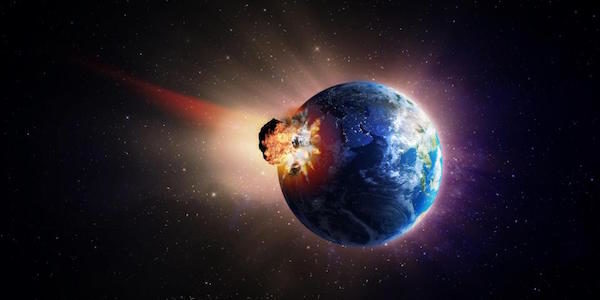
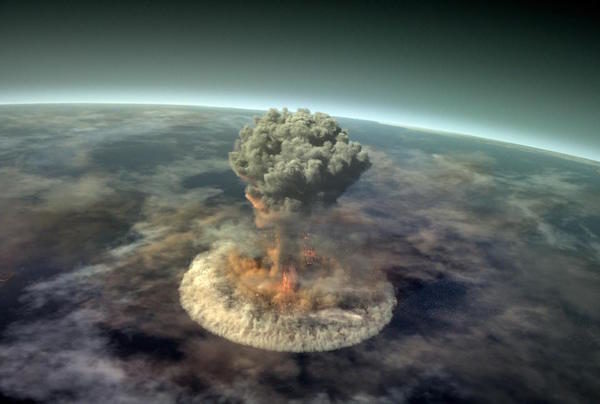
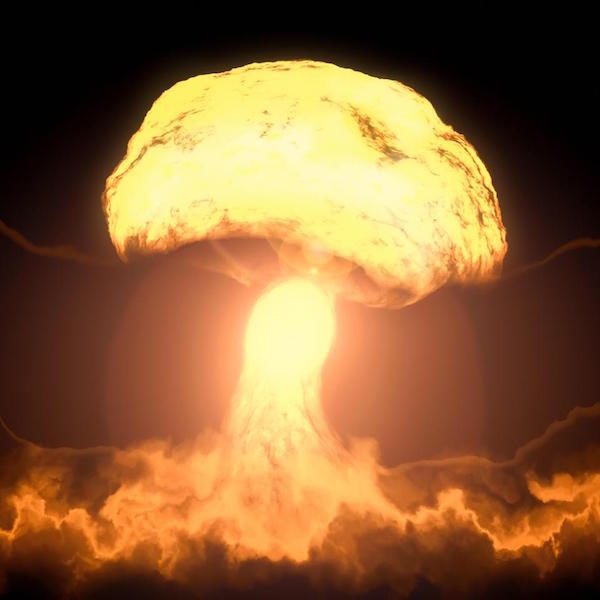
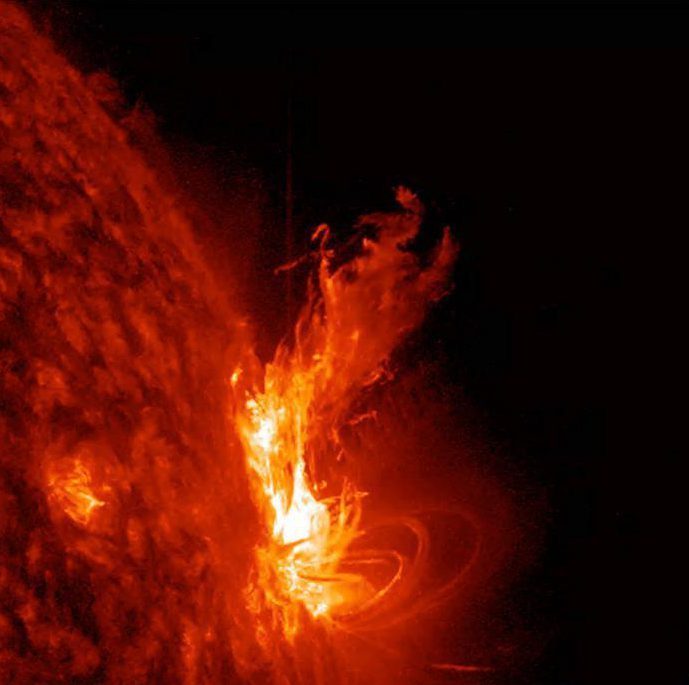
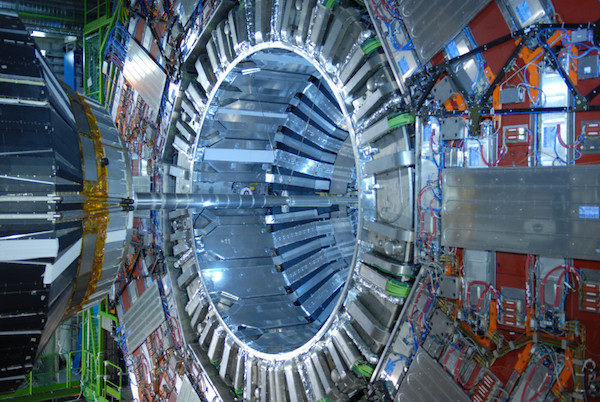
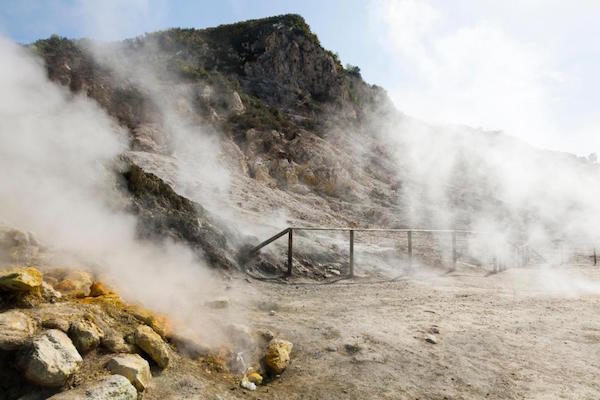



Reader Comments
Mouthfull lol